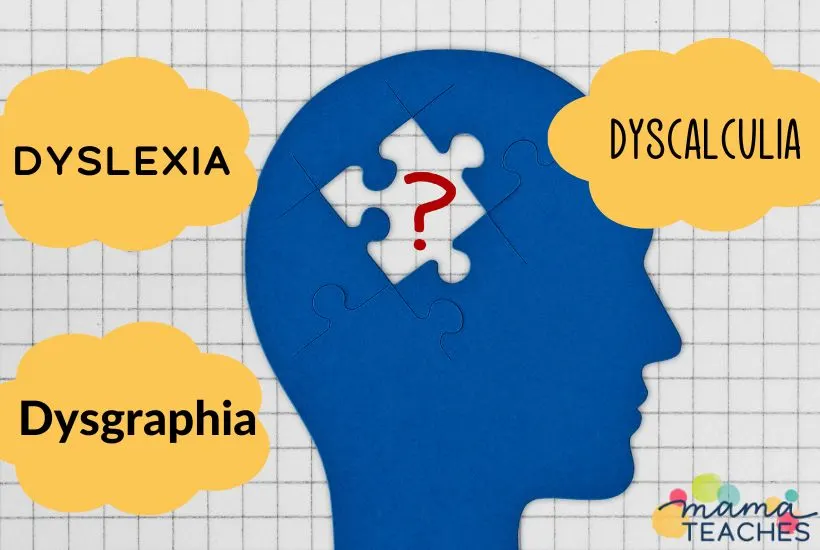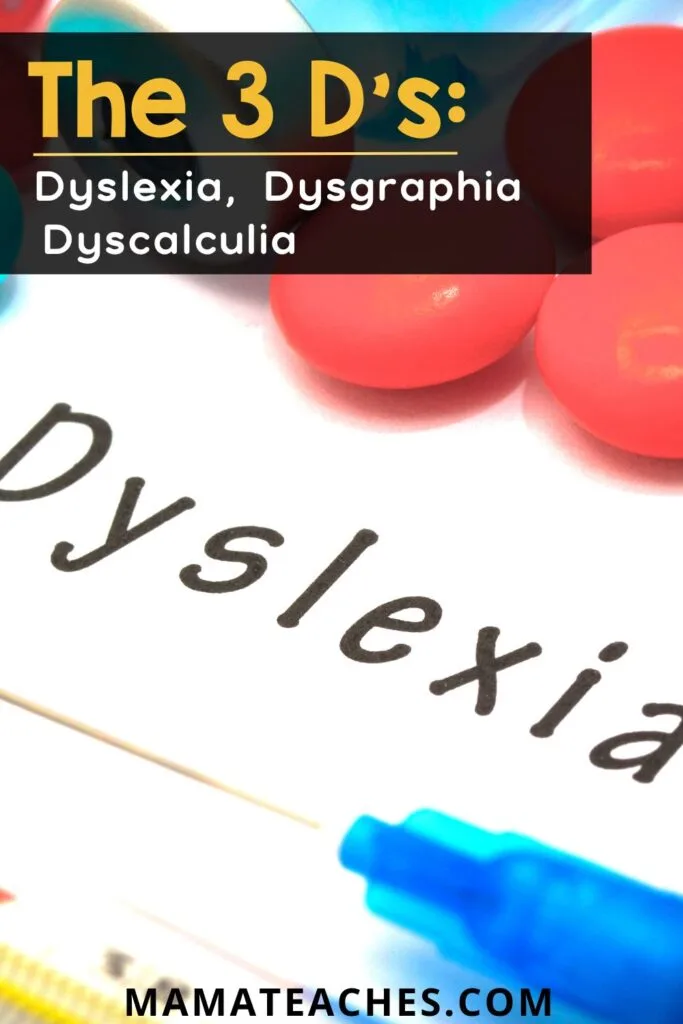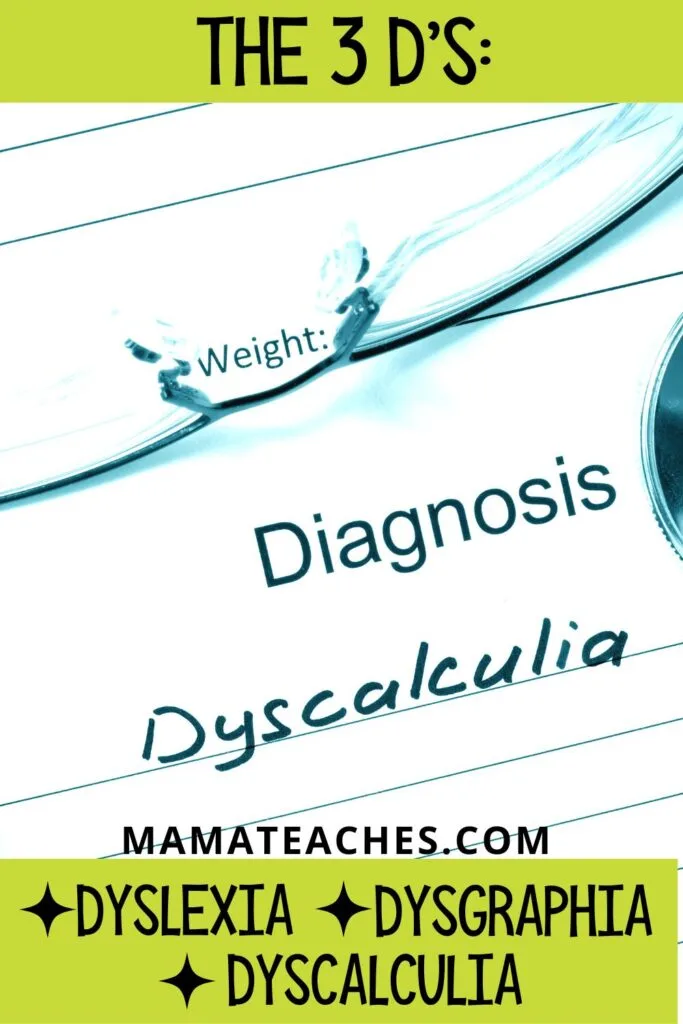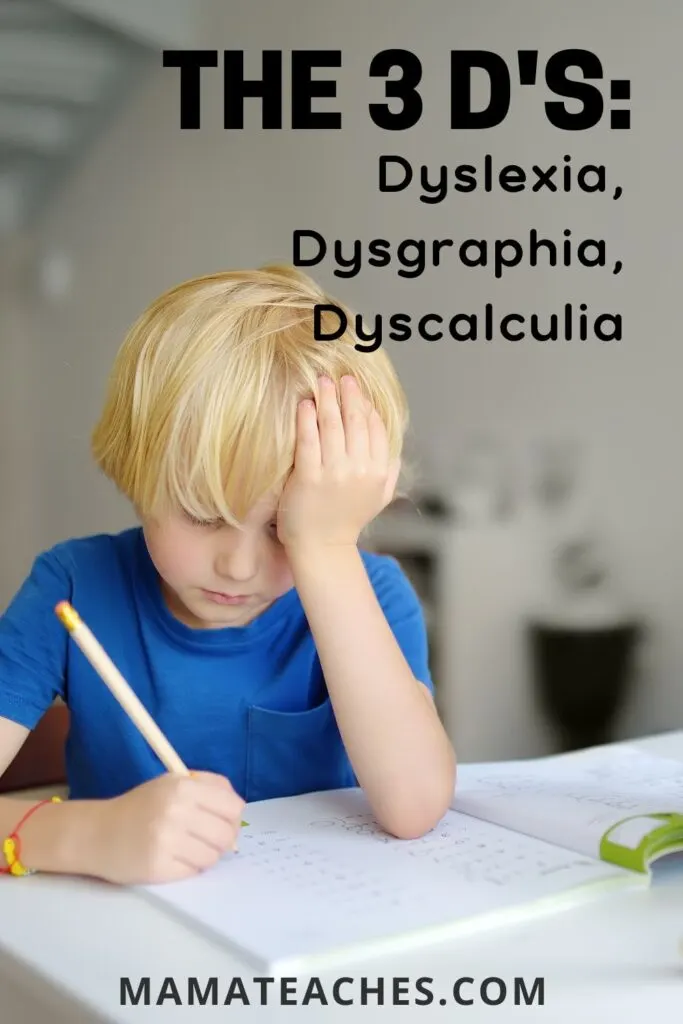Dyslexia, dysgraphia, dyscalculia…what do each of these entail? And is there anything that links them? Read on for a summary of the 3 Ds.

What Is Dyslexia?
Dyslexia is a brain-based learning disorder that affects around 15-20% of people.
It is predominantly a struggle to associate letters with their corresponding sounds.
For that reason, it impacts a person’s ability to read, spell, and do certain math problems.
A child with dyslexia may have trouble spelling simple words, confuse similar-looking letters like “b” and “d”, read the sounds in a word in the wrong order, or have trouble sounding out new words.
As a person gets older, he may also struggle with learning a foreign language (since it consists of unfamiliar words) and reading comprehension (because the act of decoding takes so much focus).
A person with dyslexia can learn to manage it with specialized reading therapy (often incorporating a multisensory approach) and accommodations such as dyslexia-friendly fonts and speech-to-text and text-to-speech technology.
You can read more about dyslexia here.

This article contains affiliate links to things that you might like.
What is Dysgraphia?
Dysgraphia is a brain-based learning disorder that affects a person’s ability to write.
It may also impact their fine motor skills overall. There are several forms of dysgraphia.
In some, dysgraphia only impacts their ability to spontaneously form letters; the letters may come out backward, and they may be improperly spaced.
In others, dysgraphia affects a host of fine motor tasks (including writing) since poor muscle tone and dexterity are impacted.
Other forms of dysgraphia may affect visual-spatial skills and holding the sounds of words (or phonemes) in the mind while writing.
Occupational therapy can greatly improve a person’s ability to write.
Someone with dysgraphia can also take advantage of accommodations such as pencil grips, speech-to-text technology, and graph or specially-lined paper.
You can read more about dysgraphia here.

What is Dyscalculia?
Dyscalculia is a brain-based learning disorder that affects a person’s ability to associate numbers with quantities and thus do mental math.
Dyscalculia can cause a child to skip numbers when counting. He or she may also struggle with counting out manipulatives.
A child with dyscalculia may not associate “3” with a quantity, only with the shape of the numeral.
This means it takes him much longer to memorize math facts.
Teens and adults with dyscalculia may still need to use their fingers to do math.
They may also struggle with problems involving money or other real-world applications of math (such as word problems).
You can read more about dyscalculia here.

What Do Dyslexia, Dysgraphia, and Dyscalculia Have in Common?
The 3 Ds, dyslexia, dysgraphia, and dyscalculia, are separate learning disorders, but they may co-occur.
If a person has one, it may be worth testing for the others so you can form the best treatment plan.
Dyslexia, dysgraphia, and dyscalculia are all lifelong brain differences, although treatment and accommodations can make them manageable.
All three have no connection whatsoever to intelligence level.
ADHD, anxiety, and depression may also cooccur with dyslexia, dysgraphia, and dyscalculia.
Treating ADHD may improve the symptoms of the 3 Ds because it results in an improved ability to focus.
Treating anxiety and depression may also reduce stress and thus improve concentration.

What Is the Difference Between Dyslexia, Dysgraphia, and Dyscalculia?
Although it grossly oversimplifies them, you can remember the difference between the 3 Ds by remembering dyslexia = reading, dysgraphia = writing, and dyscalculia = numbers.
